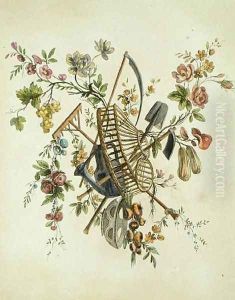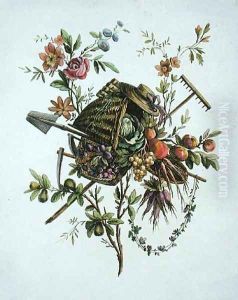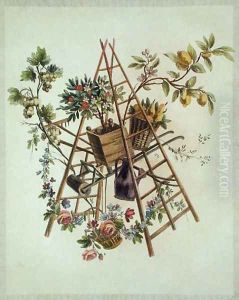Ranson, Pierre Paintings
Pierre Ranson was a French artist known for his contributions to the Art Nouveau movement, though not as widely recognized as some of his contemporaries. Born in 1861 in the city of Paris, Ranson was an integral part of the Parisian art scene at the turn of the 20th century. He initially trained at the École des Arts Décoratifs in Paris, where he developed his skills in decorative arts, a field that would come to define his career.
Ranson's artistic output was primarily focused on textile design and wallpaper patterns, areas in which he excelled due to his keen sense of color and composition. His designs often featured naturalistic themes, such as flora and fauna, rendered in a stylized manner typical of the Art Nouveau aesthetic. This period was characterized by its embrace of organic forms and curvilinear lines, which Ranson incorporated into his work with a distinctive grace.
In addition to his textile and wallpaper designs, Pierre Ranson was also involved in creating designs for furniture and other decorative objects. His work contributed to the overall ethos of the Art Nouveau movement, which sought to break down the barriers between fine arts and applied arts, and to elevate the status of the latter to that of the former. Ranson's designs were well-received, and he participated in various exhibitions, including the Paris Salons, where his work was showcased alongside that of his peers.
Pierre Ranson's career, however, was cut short by his untimely death in 1909. Although his life spanned less than five decades, his artistic legacy lived on through his influence on the decorative arts. His contributions to the Art Nouveau movement have been preserved in the collections of various museums and in the fabric of the buildings and objects that still bear his distinctive designs. Despite not being a household name, Ranson remains a respected figure among those who study the Art Nouveau period and the history of decorative arts.


